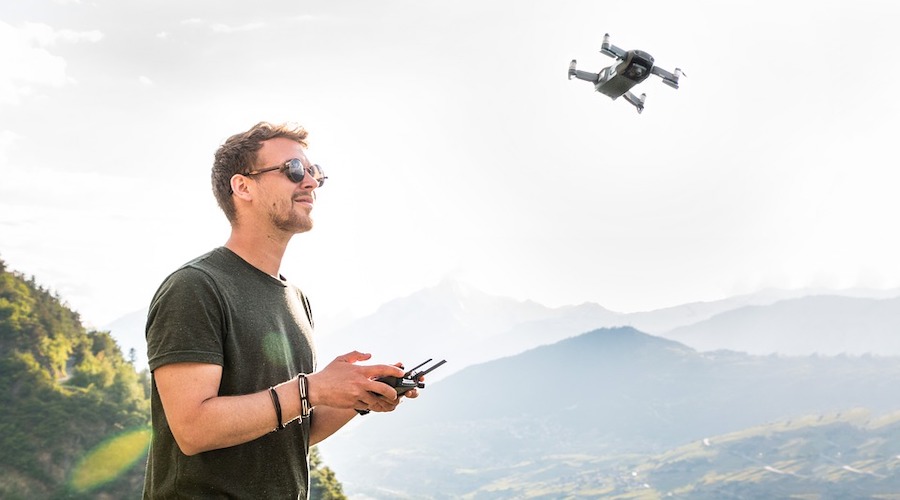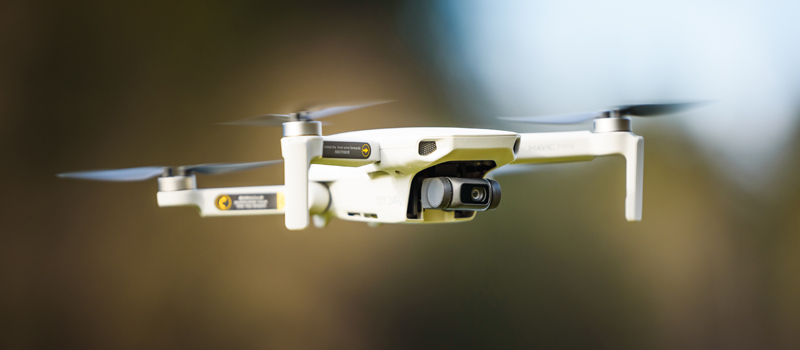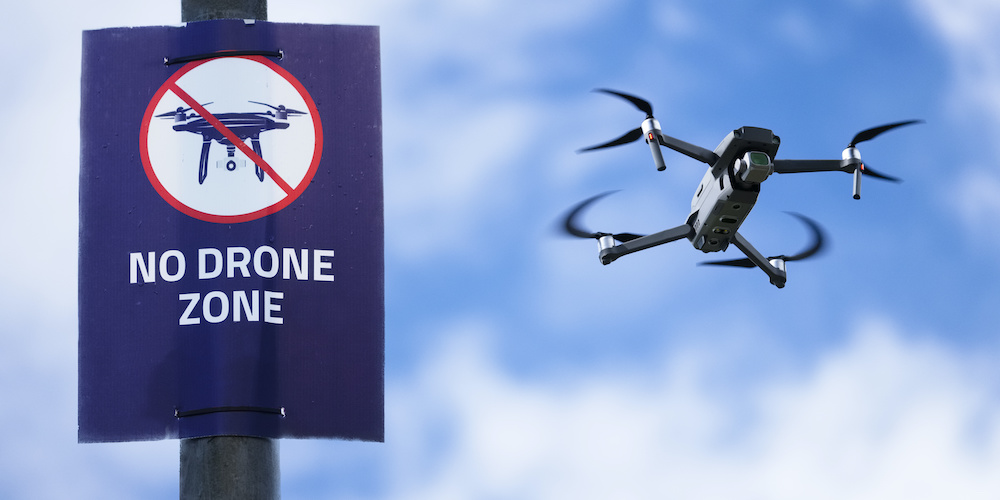-
Where do these rules come from?
- 1. Drones that weigh more than 0.55 lbs. need to be registered
- 2. Fly only recreationally
- 3. Do not fly in controlled airspace without prior approval
- 4. Do not fly in restricted airspace
- 5. Fly your drone only below 400 feet when in uncontrolled airspace
- 6. Always give way to manned aircraft
- 7. Do not fly over groups of people or any public events
- 8. Do not fly in an emergency response area
- 9. Make sure that you are physically and mentally fit to fly a drone
-
Do recreational pilots need to take a proficiency test or any training?
-
Can recreational pilots fly a drone at night?
-
Final thoughts
Depending on who you ask, recreational drone pilots are either way too unrestricted or have been getting the short end of the stick when it comes to regulations. The history of recreational drone pilots has been filled with conflict and ambiguity, and it is only in the recent year that they have been given due attention by the FAA and the federal government.
All the noise aside, what are the flight rules that recreational drone pilots need to follow? Are there benefits to sticking to recreational drone flight versus getting a Part 107 license?
Where do these rules come from?
Flight rules for recreational drone pilots were virtually put through a reset with the implementation of the FAA Reauthorization Act of 2018. The pertinent sections, Section 349 and 350, superseded all other guidelines or documents that have been released before pertaining to recreational drone flight- and boy, were there lots of them.
All that matters right now is that these are the rules to follow for recreational drone flight:
1. Drones that weigh more than 0.55 lbs. need to be registered
Just as with Part 107 pilots, all drones that weigh between 0.55 and 55 pounds need to be registered with the FAA. This is are done through the FAA DroneZone website, where you will need to sign up for an account. You will be prompted for your name, contact details, a mailing address, and the make and model of your drone. You will also need to pay a $5 registration fee.
After registration, you should receive a unique serial number by email. Recreational pilots may register several drones under a single serial number, so you will only need to pay the $5 registration fee once.
An addition to this rule is that you will need to mark your drone with the serial number in a manner and location that is permanent and easily visible upon visual inspection. The recommended ways to do this is by permanent market, sticker, or engraving to the body of the drone.
2. Fly only recreationally
This might be the most important rule for recreational drone pilots: make sure that you are flying only for fun. Any attempts to profit from drone flight if you don’t have a Part 107 license or are not flying under Part 107 rules is deemed illegal.
The reason we’re stressing this rule is that it can be very easy to unwittingly fall into the realm of commercial drone flight. Even if you aren’t getting directly paid for flying your drone, the use of any of your output to aid business will still be considered illegal. This includes the use of aerial photos as advertisement material or including them in a publication.
3. Do not fly in controlled airspace without prior approval
The airspace in the immediate surroundings of airports is considered controlled airspace, and drone flight in these areas is regulated due to increased air traffic density. However, it is possible for recreational drone pilots to request for approval to fly in controlled airspace via the LAANC system.
The Low Altitude Authorization and Notification Capability (LAANC) is a system that was launched by the FAA in 2017 that allows drone pilots to request real-time approval to fly their drones in controlled airspace. Although it was initially designed for use by commercial drone pilots, the service was more recently expanded to include recreational pilots.
Right now, there is just a handful of companies that offer LAANC support for recreational pilots, including Airmap, KittyHawk, Thales Group, Altitude Angel, and UASidekick. Recreational pilots can simply lodge a request through the desktop software or corresponding mobile app, provide details about their planned drone flight mission, their drone make and model, and their contact numbers, and receive authorization within minutes.
Even if approval is granted to fly within controlled airspace, it will always come with area and altitude limitations. You need to remember these restrictions and keep your lines of communication open should the FAA need to get in touch for any reason.
4. Do not fly in restricted airspace
As opposed to controlled airspace, restricted airspace Is typically designated for military activities, such as a flight exercise or artillery testing. Although it’s still possible to request for approval to fly a drone in such an area from the controlling authority, doing so is always at your own risk. Considering the hazards of flying in restricted airspace, this isn’t something that we recommend if you’re doing it just for fun.
5. Fly your drone only below 400 feet when in uncontrolled airspace
If you don’t want to bother with securing LAANC authorization, then your alternative is to fly only in uncontrolled airspace, also called Class G airspace. There is no ATC service in Class G airspace, so a recreational drone pilot does NOT need to get any approval to fly. However, you will still need to fly below the 400-foot ceiling altitude to make sure that your drone doesn’t get too close to any manned aircraft.
6. Always give way to manned aircraft
To avoid any collision hazards, drones are required to give way to manned aircraft at all times. This rule applies even if you’re flying a drone in uncontrolled airspace, and for manned aircraft that are operating on the ground.
The FAA expects drone pilots to avoid flying drones that will bring them close to the traffic patterns or approach corridors of airports. However, should an on-air encounter between a drone and a manned aircraft be imminent, the drone pilot must give way in a manner that will not make it necessary for the manned aircraft pilot to alter their flight path.
7. Do not fly over groups of people or any public events
Flying a drone over any person who is not participating in the operations is prohibited under both commercial and recreational drone flight rules. Take note that consent is not participating – a bystander may allow you to fly a drone over them, but this is still considered by the FAA as illegal. Thus, the only people you are allowed to fly over are your crew, including any assistant pilots or visual observers.
8. Do not fly in an emergency response area
Air support now constitutes a huge part of any type of emergency response – whether it’s firefighters, law enforcement, or search and rescue personnel. As such, both recreational and professional drone pilots are advised to stay away from emergency response areas. There have already been several incidents of air-based respondents getting grounded because of sightings of nearby drones. If you’re flying just for fun, being the cause of the delay of emergency response is probably one of the most irresponsible things you can do.
9. Make sure that you are physically and mentally fit to fly a drone
Finally, recreational drone pilots are expected to do a self-assessment on their physical and mental state before they proceed to fly a drone. The only outright prohibited condition is being under the influence of drugs or alcohol.
Do recreational pilots need to take a proficiency test or any training?
Section 44809 of the FAA Reauthorization Act of 2018 contains a provision that will, at some point in the future, require recreational drone pilots to take an aeronautical knowledge and safety test. This test will either be administered online by a community-based organization, any organization chosen by the FAA.
Right now, this requirement has not been implemented yet. The latest update provided by the FAA on the matter is that they have selected about a dozen stakeholders, including a mix of community-based drone organizations and drone manufacturers, to give advice on the test administration requirements and process. These organizations are being deliberated as potential test administrators and will also be testing the content.
As of the latest update, the FAA seems to have completed creating the content for the future knowledge test. The selection of knowledge test administrators is scheduled to be completed by early 2020, and we can expect implementation to follow a few months after.
Can recreational pilots fly a drone at night?
This is a question we get a lot, and understandably so, because Part 107-licensed drone pilots are explicitely prohibited from flying before sunset and after sunrise. The recreational drone flight rules, however, make no mention of any restrictions against flying at night. This means that flying a drone with no prior approval is legal if you are not within controlled airspace and if you’re flying purely for fun. It’s also possible for Part 107-licensed drone pilots to fly under recreational rules if they are doing it for recreational purposes.
This is no excuse to abandon all the other drone safety guidelines. If you’re flying at night, it would be a good idea to scout the area while there’s still daylight so you can be familiar with the location and size of obstacles that could be difficult to see once the darkness sets in. We also recommend installing a set of third-party anti-collision lights on your drone if you’re planning on flying at night regularly. These are generally brighter than the stock lights and can be installed according to your preference.
Final thoughts
For the longest time, recreational drone pilots were self-regulating and enjoyed the freedom of being able to fly their drones with no worries about running afoul of the law. However, the growing number of drones in national airspace has prompted the FAA to step in and impose rules on both commercial and recreational drone flights.
For the past few years, the FAA has mostly been focused on setting guidelines for commercial drone pilots. Similar rules for recreational drone pilots have only been crafted recently, and efforts are still underway to have these new rules fully implemented. You can count on us to keep you posted if there are further updates.



